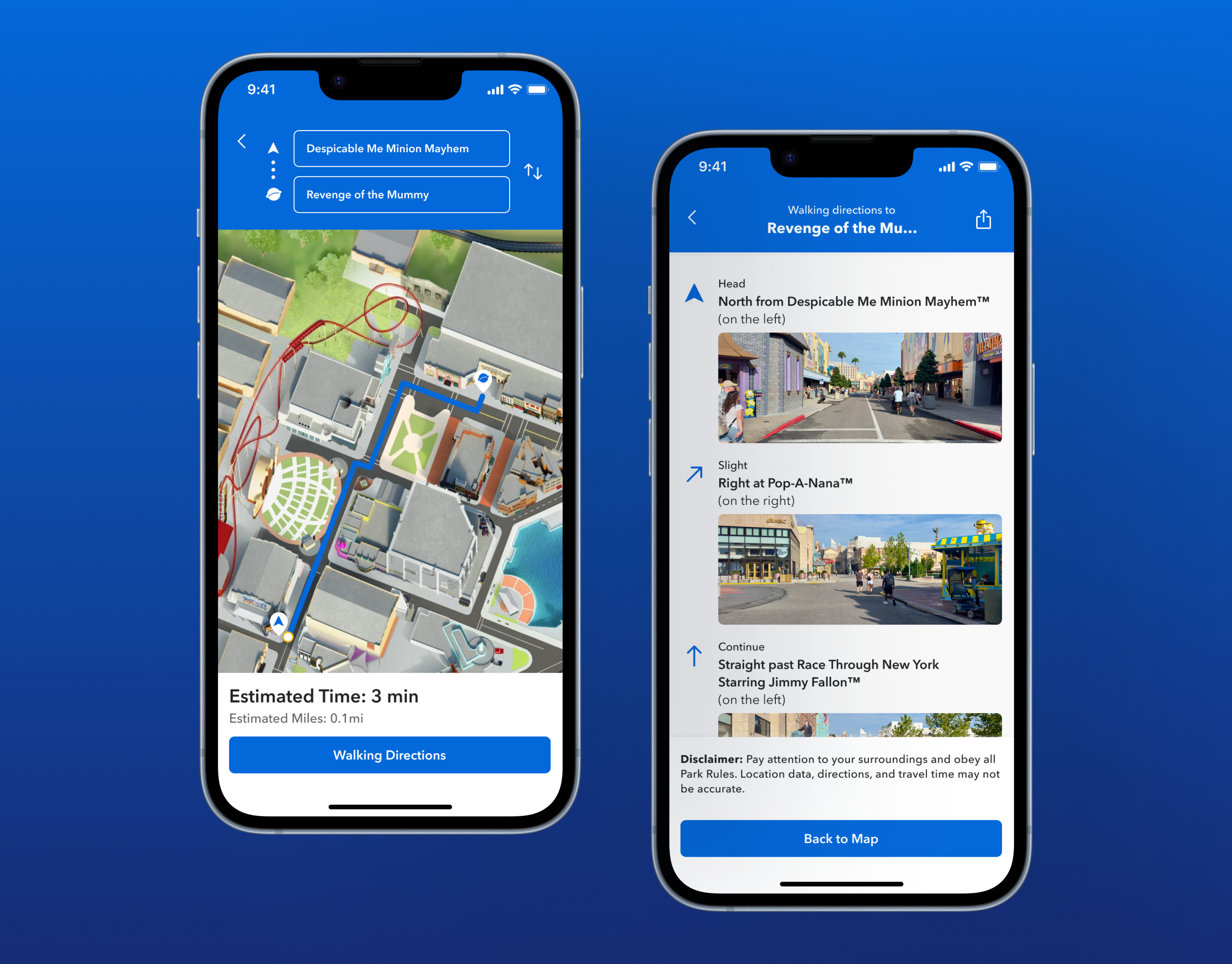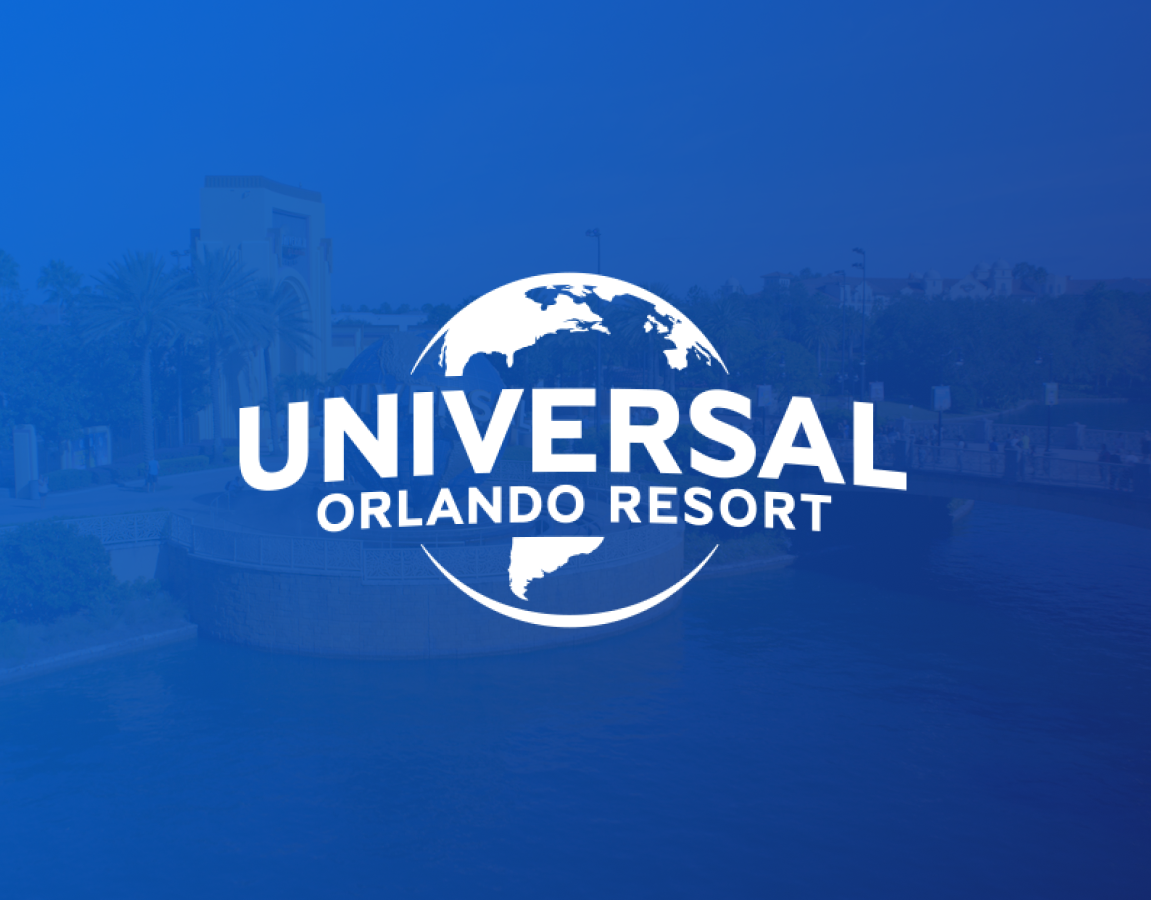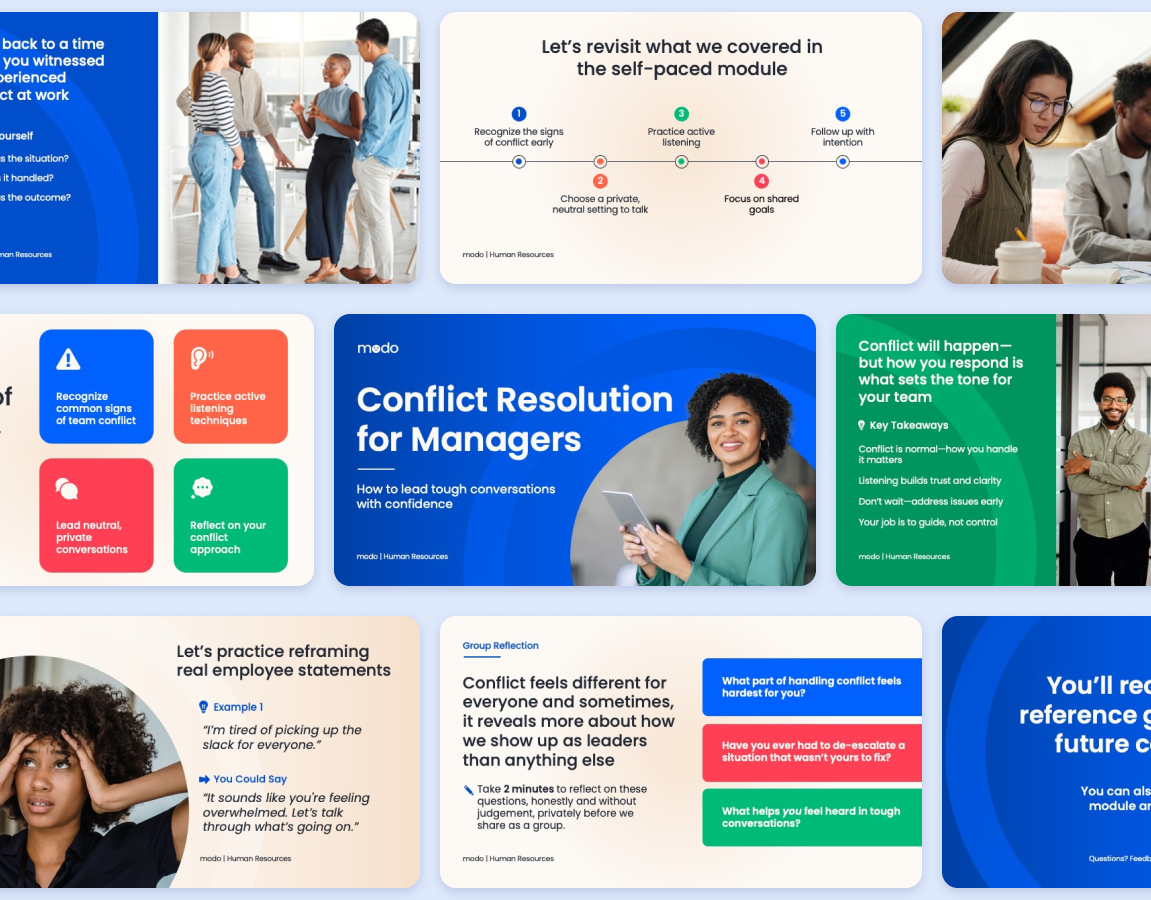Conflict Resolution for Managers
This scenario-based e-learning course helps managers navigate workplace conflict with confidence by applying effective communication techniques in challenging situations. Through interactive decision points and realistic dialogue, learners build the skills needed to resolve tension, foster collaboration, and maintain team trust.
Responsibilities
Visual Design, e-Learning Development, Instructional Design, Storyboarding, Action Mapping, Prototyping
Software Used
Figma, FigJam, Adobe Illustrator, Articulate Storyline 360
AI Used
ChatGPT
Duration
Currently In-Progress
This whole idea started with my fiancé…
Even before he officially became a manager at the company he works for, he always had those manager instincts. He’d get off from work and vent, not about his own responsibilities, but about how other managers were handling tough conversations with his coworkers. And over time, a pattern became clear: most managers weren’t equipped to handle conflict well. Some avoided it entirely, while others jumped in without really listening. Either way, it made things worse.
That stuck with me, especially because I saw the same thing happen at previous companies I worked for. Team conflict isn’t rare. And when it’s left unresolved, it doesn’t just create tension; it chips away at morale, slows down collaboration, and makes everything harder than it needs to be. I started imagining a course for people like my fiancé: new or soon-to-be managers who already carry leadership instincts, but don’t have the time or patience for long, boring eLearnings. Something that was clear, quick, and engaging.
🎯 The Problem I Wanted to Solve
Managers often struggle with resolving conflicts within their teams, leading to disruptions in collaboration, decreased morale, and reduced productivity. These unresolved conflicts negatively impact team dynamics and cause inefficiencies in workflows.
To address this, I set out to create an accessible, bite-sized eLearning module that gives managers actionable strategies and tools to resolve conflict with confidence. No fluff, nor filler.
🛠 My Process
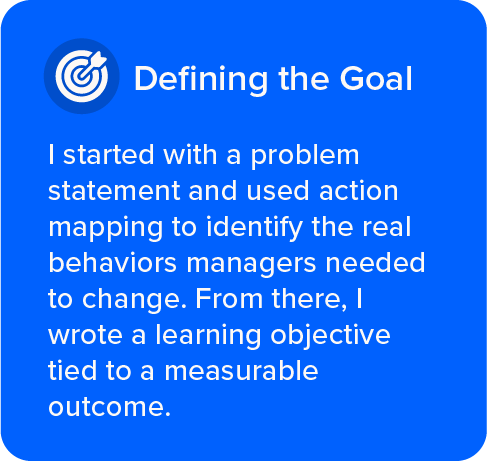

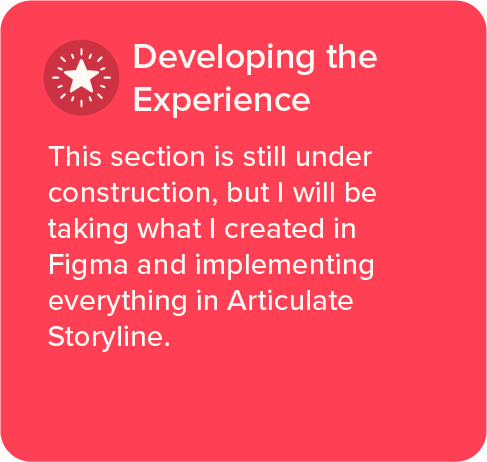
🎯 Defining the Goal
I wanted this course to do more than just “raise awareness.” It needed to support real behavior change that managers could act on immediately without feeling like they were sitting through another forgettable training.
Using Cathy Moore’s Action Mapping, I focused the experience around a measurable outcome: reducing team conflict-related disruptions by 20% within six months. From there, I identified two key actions that would help drive that result...
📌 Goal
Reduce team conflict-related disruptions by 20% within six months.
🛠️ Key Actions
1. Initiate a private, neutral conversation with team members involved in conflict.
2. Use active listening techniques to understand all perspectives.
From those actions, I built a single learning objective to guide the experience:
While the work itself can’t be shared publicly, the impact of these training initiatives was evident in the enhanced learning experiences and engagement of Team Members. Our team took pride in developing high-quality, visually engaging training solutions that supported Universal’s mission and supported new and current Team Members.
🎨 Designing the Solution
Once I had the learning strategy locked in, I started storyboarding the course to simulate a realistic, choose-your-own-path conversation. I wanted it to feel more like a real coaching moment, not a forced role-play. Also making sure to be aware of that this is a great learning opportunity for new or current managers and to have a mentor to help them through the conflict the learner will encounter in the course.
🫶 Moodboard
I took a lot of inspiration from visual novel/role-playing games (and just games in general). I wanted to take that role-playing aspect like they do in these games and apply it to a learning experience. With a branching-scenario based learning, I thought it would be the perfect solution and combination of engaging and immersion.
Some of the biggest inspirations I took was from games like Animal Crossing New Horizons, Doki-Doki Literature Club, and Honkai Star Rail.
🎨 Design Assets
I started by creating the brand in Illustrator, something simple and fun that I could reuse for future projects. After finalizing the logo and color palette, I searched Freepik for characters and backgrounds that fit the style. I customized the characters with different expressions and body language to help signal whether a situation was going well or not so much.
With those visuals ready, I jumped into Figma to begin designing interface elements like buttons and dialogue boxes. I chose rounded corners to keep things soft and approachable, avoiding harsh lines that could make the experience feel more intense than it needed to. Since the backgrounds were already colorful, I used the brand colors sparingly to keep things balanced and easy on the eyes.
👀 Here’s a peek at the visual direction so far:

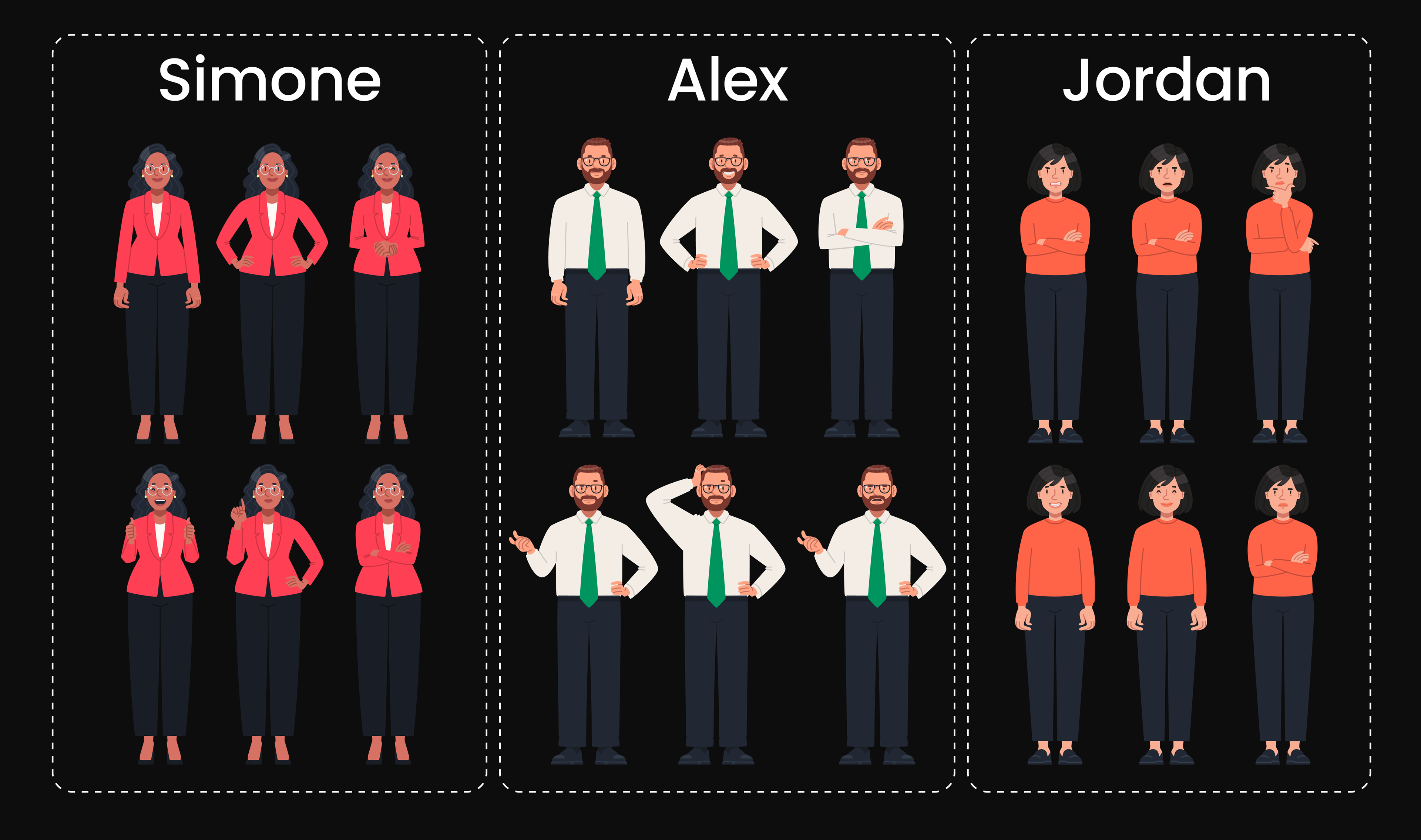

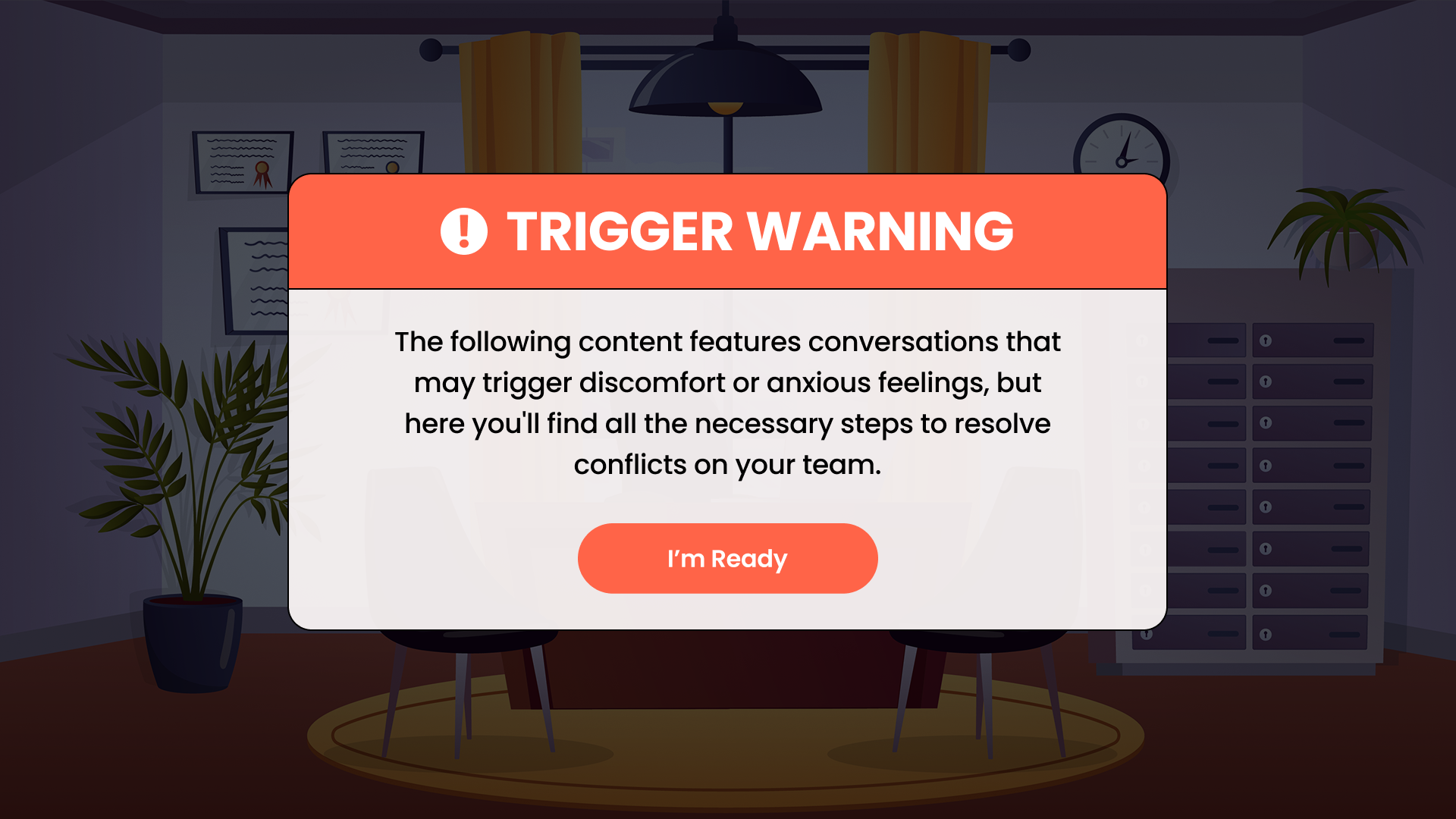
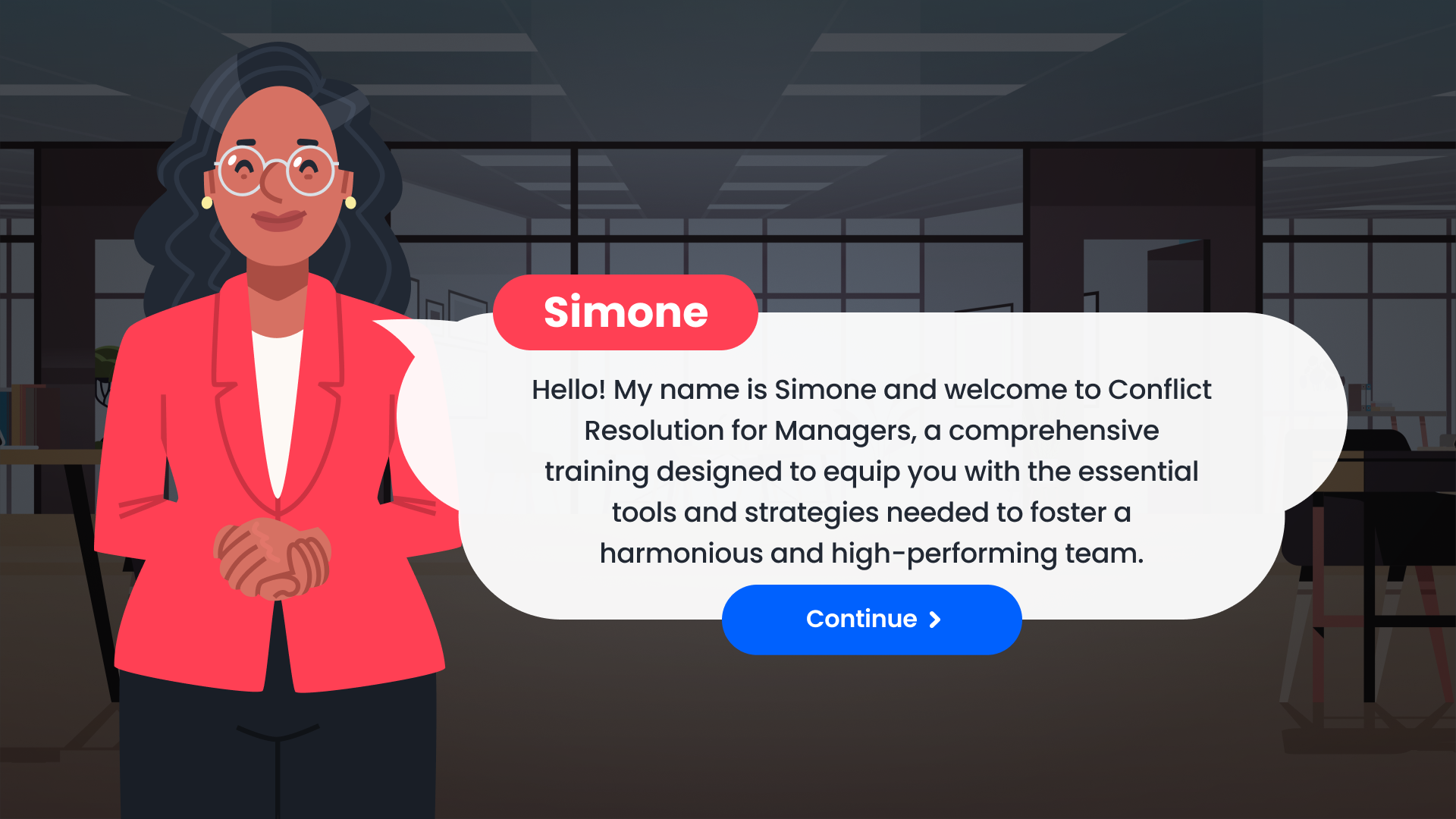

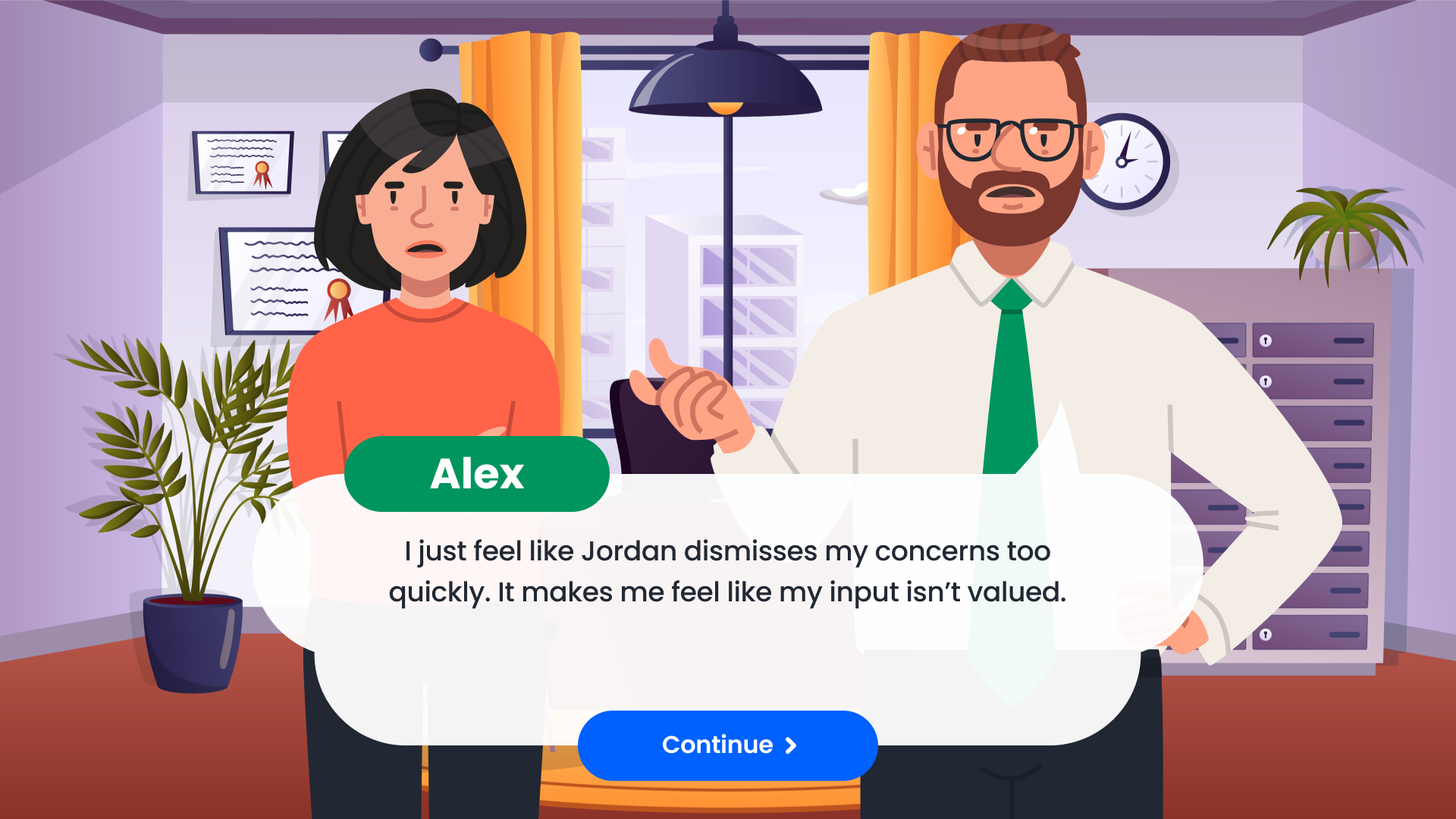
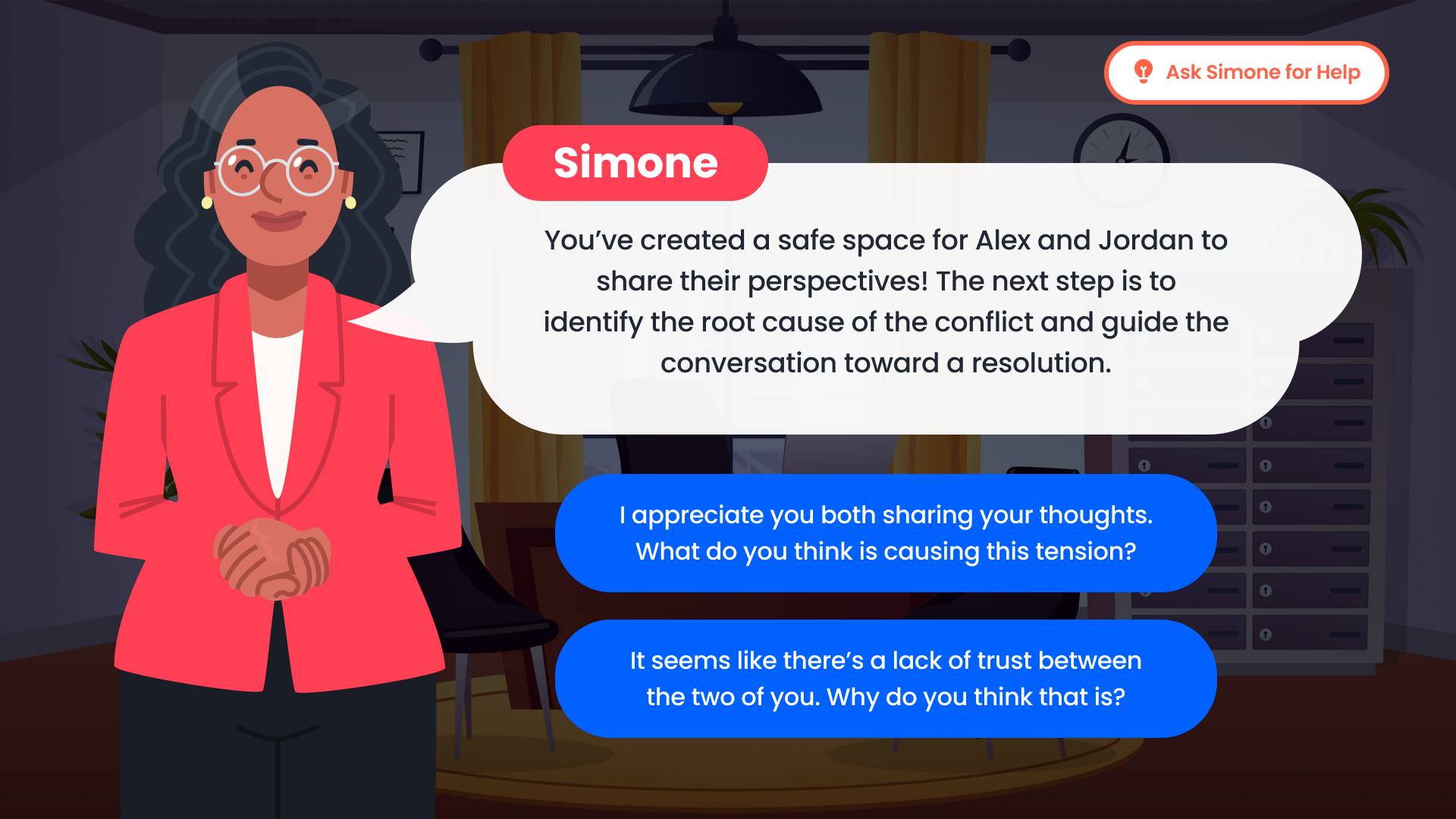
🚧 What’s Still in Progress
’m currently finishing up the scene designs in Figma and will transition to Articulate Storyline when it's time to start developing it. Here's what’s next on my checklist:
✅ Finalize scenes in Figma
✅ Take the designs in Articulate Storyline
💛 Why I’m Sharing It Anyway
This project is still in progress, but I didn’t want to wait to share it.
Too often, portfolios only show the polished, final product, but I believe the process is just as important. This project shows how I think through real-world problems, stay focused on the learner, and make intentional design choices that lead to impact.
So, even though it’s not done yet, it’s well on its way, and I’m proud of where it’s going.

